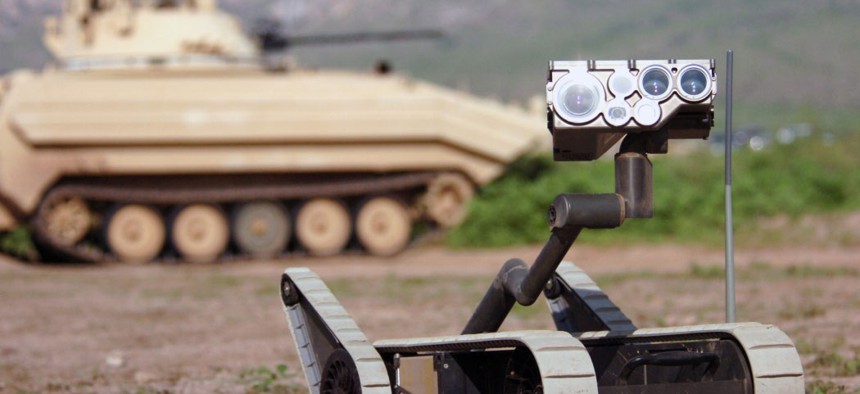Next generation of ground robots will use mesh networking
The technology will allow robots to better function in underground and urban environments.
The Army’s next robot designed to counter explosive hazards will make use of mesh networking to improve connectivity and give additional soldiers access to sensor data and control over the platform on the battlefield.
The Man Transportable Robotic System Increment II (MTRS Inc II) is a medium-sized robot that provides standoff capability to identify and counter explosives and CBRN hazards. The MTRS is designed to be modular with a common controller and platform and components that can be quickly swapped out depending on mission specifics. In October, the Army awarded a $100 million contract to Endeavor Robotics to build the platform.
The 1,200 MTRS platforms will run on mesh networks. Unlike standard systems, which rely on a central point of connectivity, each node in a mesh network functions as part of the infrastructure of the network. This system creates a more resilient, self-healing connective state where each node can communicate with others. Mesh networks allow for connectivity in environments like tunnels or urban environments where obstacles might restrict traditional networks. Endeavor has selected Persistent Systems MPU5 smart radios as the platform which the MTRS will use. MPU5s are already fielded by military units like the National Guard’s WMD Civil Support Teams. The radios feature integrated Android operating systems for additional security and the company’s Wave Relay algorithm which improves the bandwidth and latency of the mesh network.
Tom Frost, the President of Endeavor Robotics, said their decision to include these particular systems flowed from the desire to have the best cryptographic and communications capabilities on the market. However, he saw the future battlefield as one where robots from five to 500 pounds would need to communicate with one another and give soldiers the ability to pass off control between them.
Nicholas Naioti, Vice President of Business Development for Persistent Systems, described a battlefield scenario possible with the inclusion of mesh networks: “A team can deploy a whole set of solutions, such as a network of UGVs down a tunnel system, while having a UAS overhead providing real-time situational awareness for teams back in a vehicle or a command and control center who are monitoring the networked ISR video, talk groups and sensor information across one large-scale network.” In traditional networks, he mentioned, each platform would have been controlled by a single user.
The Department of Defense has considered ways in which to implement and use mesh networking for a number of years. Looking forward, documents like “Shaping the Army Network: 2025-2040” describe the imperative of globally-interconnected nodes that can withstand electronic warfare and cyber threats. While the MTRS Inc II still only functions on the tactical level, advancements in the underlying technologies indicate the system is one step closer to a reality.
NEXT STORY: Can AI put DOD's dormant data to work?




